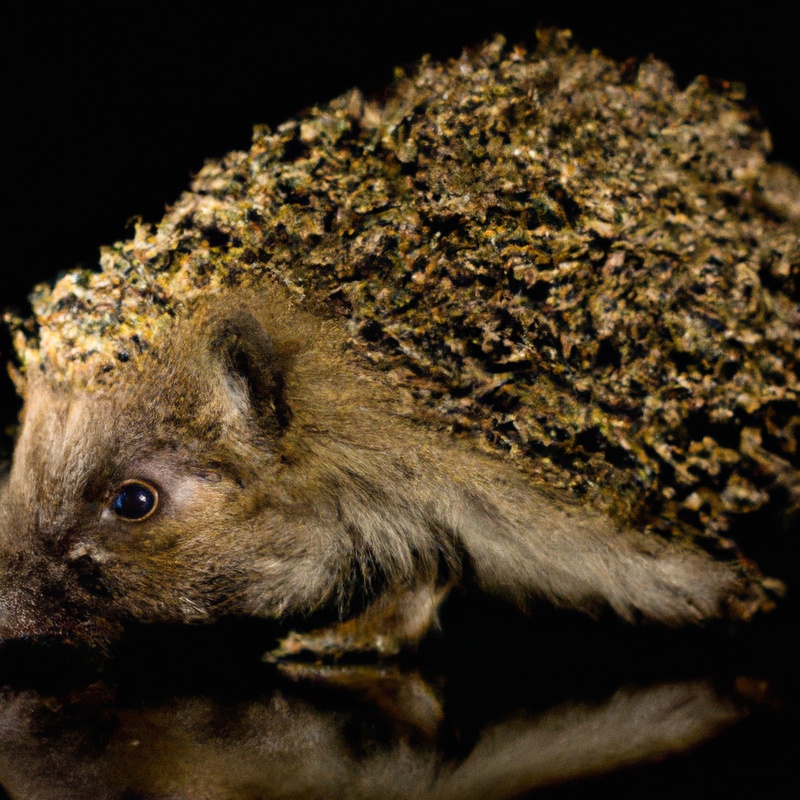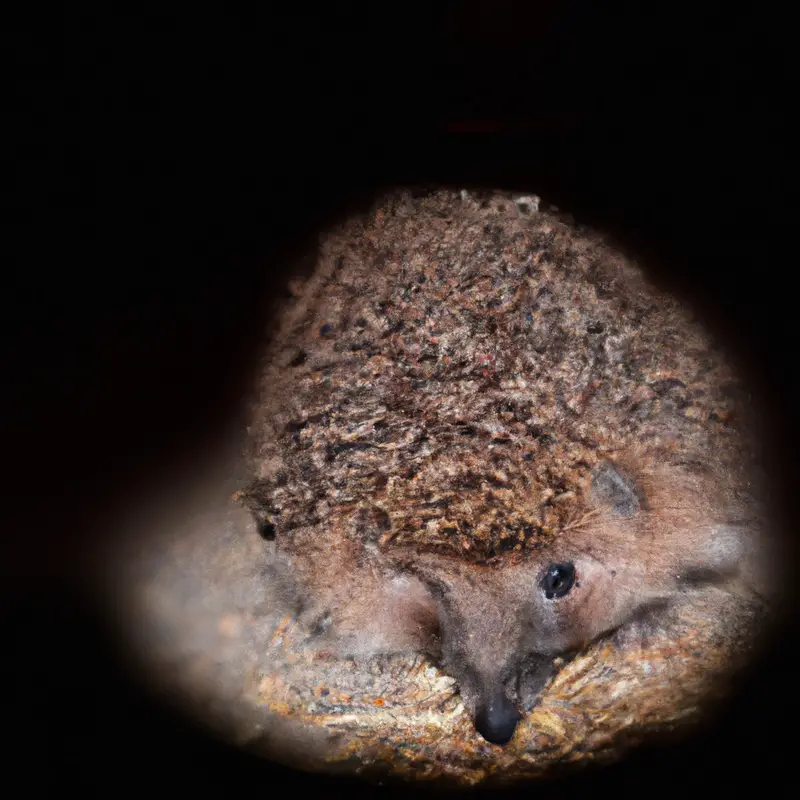How To Create a Hedgehog Tunnel For Safe Passage?
Key Takeaways:
- Creating a hedgehog tunnel can provide a safe passage for these nocturnal creatures.
- Hedgerows and fences can be modified to create an effective hedgehog tunnel.
- Be mindful of the size and positioning of the tunnel entrance to ensure hedgehogs can access it easily.
- Regularly check and maintain the tunnel to ensure it remains a safe and secure route for hedgehogs.
Do you want to provide a safe passage for those adorable hedgehogs in your garden? Well, look no further! In this article, I’ll guide you through the process of creating a hedgehog tunnel that will ensure their safety and allow them to move freely.
We’ll explore everything from choosing the right location and materials to designing and building the tunnel.
Plus, I’ll share tips on placing the tunnel effectively and maintaining it for long-term use. So, let’s get started and create a hedgehog-friendly environment in your garden together!
| Materials | Instructions |
| Wire mesh (small-grid) | 1. Dig a trench along the desired tunnel route. |
| Garden stakes or rods | 2. Place the wire mesh in the trench, ensuring it is wide and tall enough for a hedgehog to pass through. |
| Zip ties or wire ties | 3. Secure the wire mesh to the stakes or rods using zip ties or wire ties. |
| Gloves | 4. Wear gloves to protect your hands and prevent injury while working with the wire mesh. |
| Shovel | 5. Backfill the trench, burying the wire mesh at least 6 inches below the surface. |
| Soil | 6. Pack the soil tightly around the wire mesh to create a secure and stable tunnel. |
| Mulch or grass | 7. Cover the tunnel with mulch or grass to blend it into the surrounding environment. |
Choosing the Right Location for a Hedgehog Tunnel
The location of your hedgehog tunnel is important for safe passage.
Assess your garden to find potential locations for the tunnel.
Why is the location important?
The location of a hedgehog tunnel is important because it determines whether or not hedgehogs will be able to find and use it.
Hedgehogs need safe and accessible routes to move between different habitats, and choosing the right location for a tunnel ensures that they can do so without obstacles or disturbances.
The ideal location should be quiet, away from busy roads, and in an area where hedgehogs are likely to travel.
It’s also important to consider the surrounding vegetation and ensure that the tunnel blends in well with the environment.

Assessing your garden for potential tunnel locations
Assessing your garden for potential tunnel locations is important in creating a safe passage for hedgehogs. Start by observing the areas where you frequently find hedgehogs or signs of their presence.
Look for natural hiding spots, like dense vegetation or bushes, as these can be good locations.
Check for obstacles or hazards that may hinder the hedgehog’s movement. Make sure the tunnels are wide enough for them to navigate comfortably.
Remember to consider connectivity, ensuring the tunnels link important areas of your garden.

Materials Needed for Building a Hedgehog Tunnel
To build a hedgehog tunnel, you will need appropriate tunnel materials and a few essential tools.
Selecting the appropriate tunnel materials
When selecting materials for your hedgehog tunnel, it’s important to consider a few factors.
First, avoid materials that can harm the hedgehogs, such as sharp edges or toxic substances.
Opt for smooth and non-toxic materials instead.
Second, choose materials that can withstand outdoor conditions, like rain and sun exposure.
Consider using weather-resistant materials like PVC or metal.
Lastly, the materials should be sturdy enough to hold up against potential predators.
Use materials that can deter digging or climbing, such as wire mesh or solid wood.
Tools required for construction
To build a hedgehog tunnel, you’ll need a few tools to get started.
Here are some essential ones:
- Shovel: You’ll need a shovel to dig the trench for the tunnel. Make sure to choose one that is sturdy and comfortable to use.
- Tape Measure: Using a tape measure will help you ensure the dimensions of the tunnel are accurate, so hedgehogs can comfortably pass through.
- Saw: A saw will come in handy if you need to trim or cut any materials for the tunnel construction.
- Hammer: You’ll need a hammer to secure any nails or screws in place during the assembly of the tunnel.
- Drill: A drill will be useful for creating holes or pilot marks in the tunnel if necessary.
Remember to always prioritize safety while using these tools and take proper precautions.
Happy hedgehog tunnel building!
Design and Dimensions of a Hedgehog Tunnel
The design and dimensions of a hedgehog tunnel should be optimized for safe passage.
Optimal size and shape for a hedgehog tunnel
The optimal size and shape for a hedgehog tunnel is a crucial consideration for their safe passage.
The tunnel should be at least 13cm in height and width to accommodate their size.
A rectangular or square shape is recommended, with an entrance that is about 13cm in diameter.
Make sure the tunnel is long enough to provide a clear path for hedgehogs to navigate through.
It should also be sturdy and durable to withstand outdoor conditions.
Tunnel design considerations for safe passage
When designing a tunnel for safe passage of hedgehogs, consider the following:
- Size: Ensure the tunnel is wide enough for a hedgehog to comfortably pass through without getting stuck.
- Height: Make the tunnel tall enough to accommodate a hedgehog’s raised spines without causing any injuries.
- Materials: Use sturdy and non-toxic materials for the tunnel construction, such as wood or plastic, to avoid potential harm to the hedgehog.
- Entry and exit points: Provide clear entry and exit points for the hedgehog, ensuring they are easily accessible and appropriately sized.
- Location: Place the tunnel in areas where hedgehogs are likely to frequent, such as near hedges or fences.
- Predator protection: Consider adding features that deter predators, like a curved entrance or an internal maze, to prevent larger animals from entering and potentially harming the hedgehog.
- Maintenance: Regularly inspect and clean the tunnel to ensure it remains safe and accessible for hedgehogs.
By considering these design aspects, you can create a hedgehog tunnel that provides safe and secure passage for these adorable creatures.
Building the Hedgehog Tunnel
To build the hedgehog tunnel, follow these step-by-step instructions.
Step-by-step instructions for building the tunnel
Here’s a step-by-step guide to building a hedgehog tunnel:
- Find a suitable location: Look for an area in your garden with the least human activity and near hedges or fences.
- Dig the tunnel: Use a small spade or garden trowel to dig a shallow trench about 30cm wide and 15-20cm deep, running from one side of the garden to the other.
- Line the tunnel: Place a piece of plastic piping or a section of drainage pipe in the trench, making sure it’s long enough for a hedgehog to comfortably pass through.
- Camouflage the tunnel: Cover the pipe with soil and grass to blend it into the surroundings, ensuring it’s not too obvious to predators or other animals.
- Create an entrance and exit: Cut gaps in any fences or hedges along the tunnel’s route, making sure they are wide enough for a hedgehog to enter and exit easily.
- Encourage hedgehog activity: Add some leaves, twigs, and other natural materials around the tunnel to entice hedgehogs and make it feel like a safe passage.
Tips for creating a sturdy and durable tunnel
Creating a sturdy and durable hedgehog tunnel is essential to ensure the safety and protection of these adorable creatures.
Here are some practical tips to help you build a tunnel that will last:
- Use sturdy materials: Opt for durable materials such as strong plastic pipes or wooden boxes that can withstand outdoor conditions.
- Ensure proper drainage: Incorporate drainage holes or create a slight incline to prevent water from pooling inside the tunnel.
- Provide a secure entrance: Install a small entrance tunnel to keep out larger animals and predators.
- Consider ventilation: Add ventilation holes or gaps to allow fresh air circulation within the tunnel.
- Make it easy to clean: Design the tunnel in a way that allows you to easily access and clean the interior periodically.
- Test for stability: Before installation, test the stability of the tunnel by placing it on a solid surface and exerting pressure on it from different angles.
Placing the Hedgehog Tunnel in Your Garden
To ensure hedgehogs have safe passage, strategically place the hedgehog tunnel in your garden.
The best locations for placing the tunnel
When deciding on the best locations for placing a hedgehog tunnel in your garden, there are a few factors to consider.
Firstly, choose an area that is quiet and undisturbed, as hedgehogs prefer peaceful surroundings.
Secondly, opt for a spot with natural features like shrubs or bushes, as these provide extra protection and coverage.
Thirdly, make sure the tunnel entrance is easily accessible and doesn’t require the hedgehog to go out of their way.
Remember, by providing suitable locations for the tunnel, you are enhancing the chances of safe passage for these lovely creatures.
How to ensure hedgehogs find and use the tunnel
To ensure hedgehogs find and use the tunnel in your garden, there are a few simple steps you can take.
- Find a suitable location for the tunnel, preferably in a quiet and secluded area.
- Clear away any obstacles or debris that may prevent access to the tunnel.
- Use natural materials, such as leaves and soil, to create a welcoming path towards the tunnel entrance.
- Consider adding some tasty treats, like mealworms or wet cat food, near the tunnel to entice hedgehogs to explore.
- Avoid using pesticides or any harmful substances in your garden, as these can deter hedgehogs from approaching the tunnel.
Remember, creating a safe and inviting environment is key to ensuring hedgehogs find and use the tunnel in your garden.
Maintaining and Monitoring the Hedgehog Tunnel
Regular cleaning and maintenance keeps the hedgehog tunnel safe and functional. Monitoring hedgehog movement ensures successful passage through the tunnel.
Regular cleaning and maintenance tips
Regular cleaning and maintenance is important for ensuring the effectiveness of your hedgehog tunnel.
Here are some tips to keep in mind:
- Clean the tunnel regularly to remove any debris or dirt that may have accumulated.
- Check for any signs of wear or damage, such as loose screws or broken parts, and repair them promptly.
- Keep the entrance and exit areas clear of any obstacles or overgrown vegetation.
- Inspect the tunnel for any signs of unwanted visitors, such as pests or rodents, and take appropriate action if necessary.
- Consider placing a protective cover over the tunnel to prevent it from getting clogged with leaves or other debris.
Remember, regular cleaning and maintenance of your hedgehog tunnel will help ensure its longevity and effectiveness in providing safe passage for these cute creatures.
Monitoring hedgehog movement through the tunnel
To monitor hedgehog movement through the tunnel, there are a few things you can do.
First, place a wildlife camera near the entrance of the tunnel to capture any hedgehog activity.
Second, create a small opening on the tunnel roof, where you can insert a motion-activated light or sensor.
This will indicate when a hedgehog passes through.
Lastly, regularly check for any signs of hedgehog presence around the tunnel, such as footprints or droppings.
These steps will help you keep track of hedgehog movement and ensure their safety.
Encouraging Hedgehog-friendly Environment in Your Garden
To encourage a hedgehog-friendly environment in your garden, focus on providing food and water sources as well as creating shelter and nesting areas.
Providing food and water sources
To provide food and water sources for hedgehogs, you can:
- Put out a shallow dish of fresh water in your garden.
- Leave out a small bowl of cat or dog food, or special hedgehog food.
- Avoid giving them bread and milk as it can cause digestive problems.
- Create a wild area in your garden with long grass and log piles, where insects and slugs can thrive – hedgehogs love to eat them!
- Avoid using pesticides in your garden to keep their food sources safe.
By providing these basic necessities, you can help support hedgehogs and create a welcoming environment for them in your garden.
Creating shelter and nesting areas
To create shelter and nesting areas for hedgehogs, you can provide leaf piles, log piles, and dense shrubs where they can hide during the day. Also, consider leaving a wild corner of your garden untouched to encourage natural nesting.
Hedgehog houses are another great option, providing a safe and cozy spot for them to rest and raise their young.
Just remember to ensure there are no hazards like chemicals or excessive noise near these areas.
Frequently Asked Questions about Hedgehog Tunnels
Do hedgehogs really use tunnels?
Yes, hedgehogs do really use tunnels! Hedgehogs are natural burrowers and they utilize tunnels as a means of safe passage through gardens or other habitats. These tunnels provide them with protection from predators and allow them to navigate their environment more easily.
By creating hedgehog tunnels in our gardens, we can help these adorable creatures move safely from one area to another, enhancing their chances of survival.
So, if you want to support hedgehogs in your area, consider incorporating hedgehog tunnels into your garden design.
Can I use a pre-made tunnel instead of building one?
Yes, you can definitely use a pre-made tunnel instead of building one.
Many companies offer ready-to-use hedgehog tunnels that are specifically designed to provide a safe passage for hedgehogs.
These pre-made tunnels are often made from durable and weather-resistant materials, ensuring they can withstand different environmental conditions.
Just make sure to choose a tunnel that is the right size and height for hedgehogs to comfortably pass through.
Will other wildlife use the tunnel?
Other wildlife may occasionally use the hedgehog tunnel, especially if they are small enough to fit through it. Animals such as mice, shrews, and small birds might find the tunnel useful for navigating your garden.
However, the primary purpose of the tunnel is to provide a safe passage for hedgehogs, so it is important to make sure it is designed specifically with their needs in mind.
Additionally, if you are hoping to attract hedgehogs to your garden, providing specific features such as food and water sources will increase their likelihood of using the tunnel.
Final Verdict
Creating a hedgehog tunnel for safe passage in your garden is a simple yet effective way to support and protect these adorable creatures. By choosing the right location, materials, and dimensions, and following the step-by-step instructions for building and placing the tunnel, you can provide hedgehogs with a safe and convenient route.
Regular maintenance and monitoring are essential to ensure the tunnel remains functional.
Additionally, creating a hedgehog-friendly environment in your garden, with food, water, and shelter, will further encourage these fascinating creatures to visit and thrive. By implementing these measures, you can make a real difference in the conservation of hedgehogs and create a harmonious habitat for wildlife in your own backyard.








